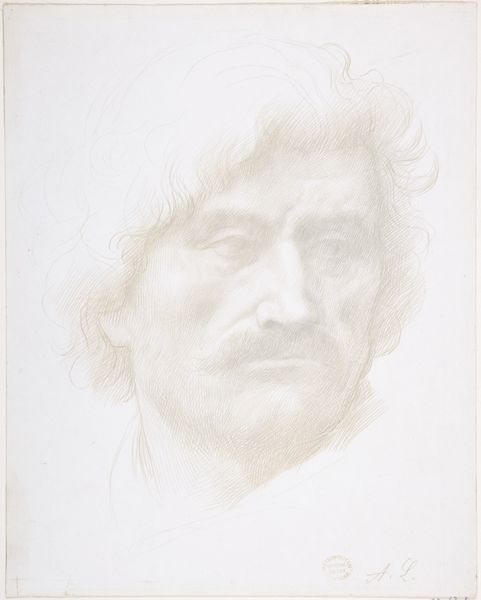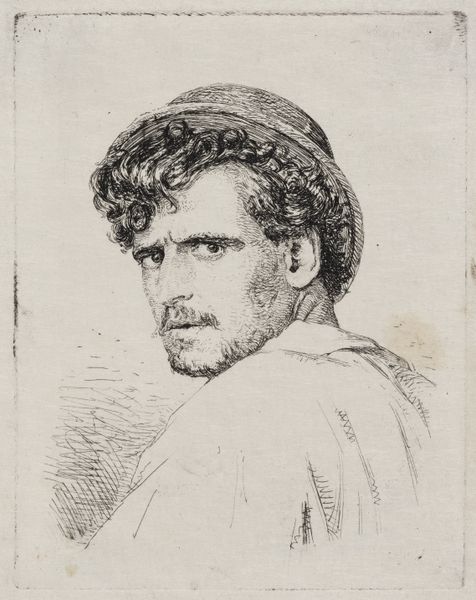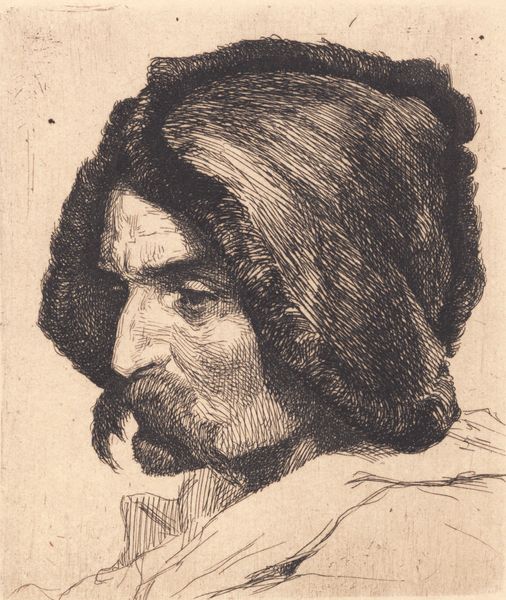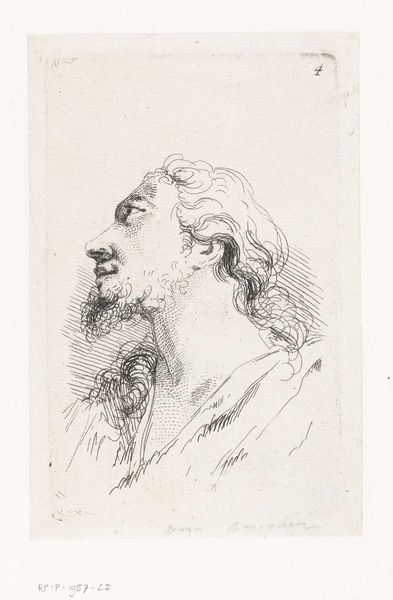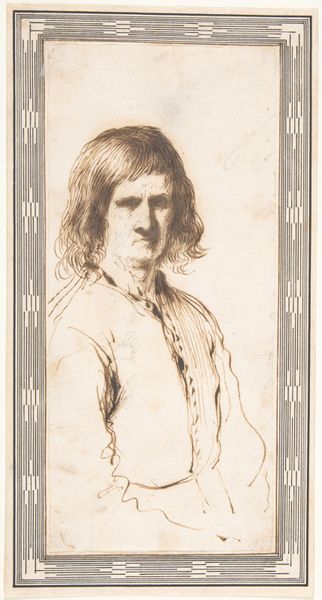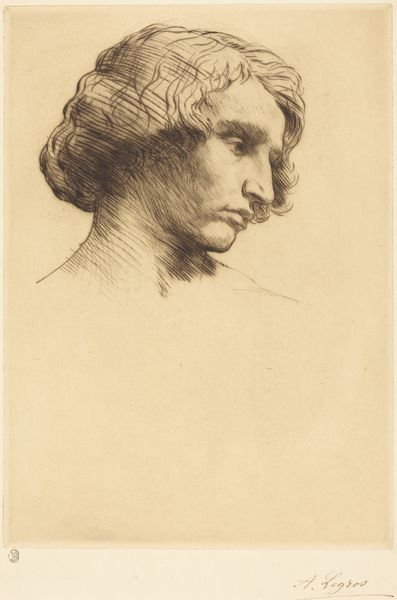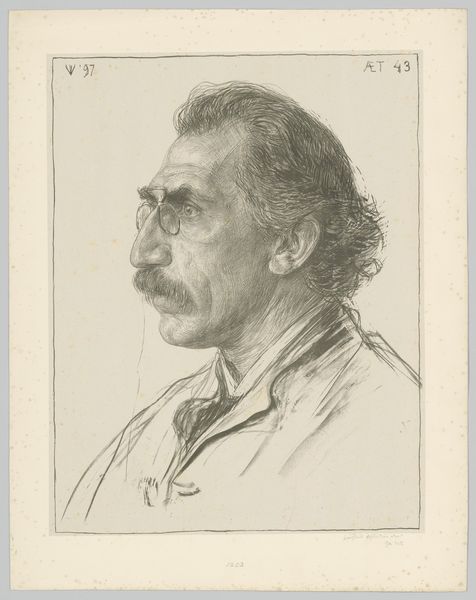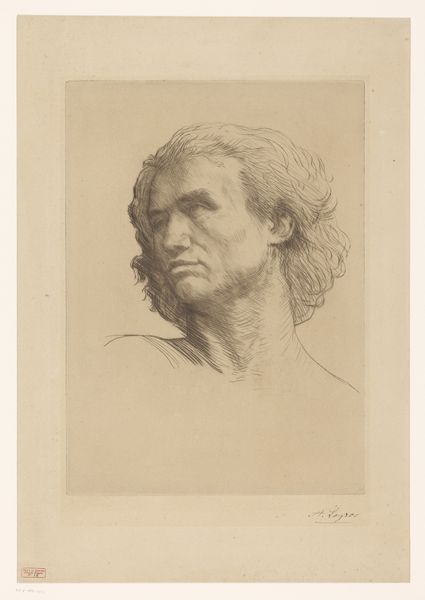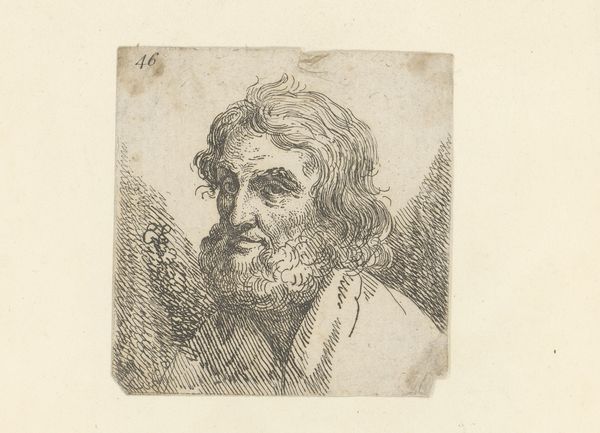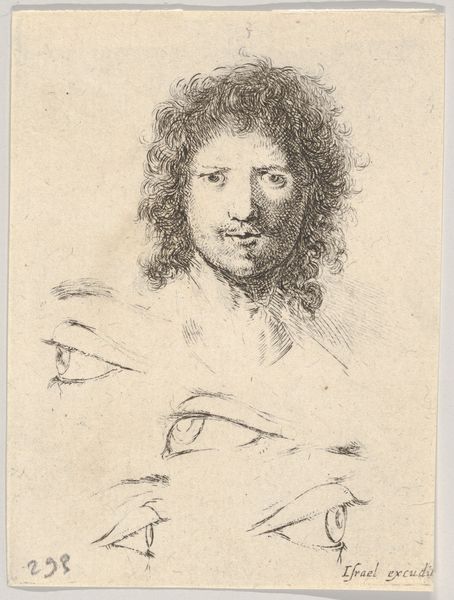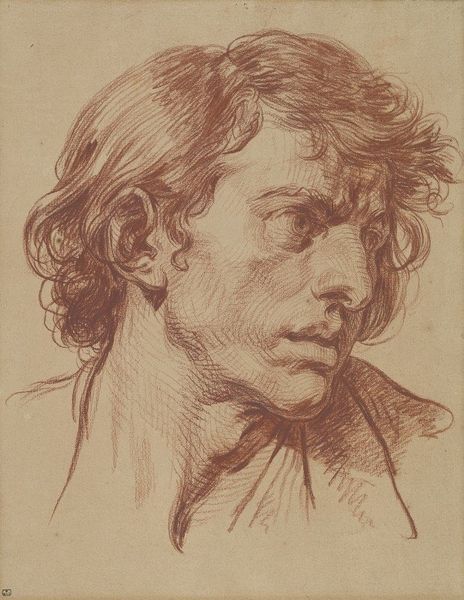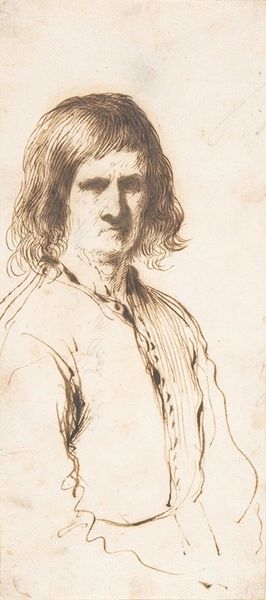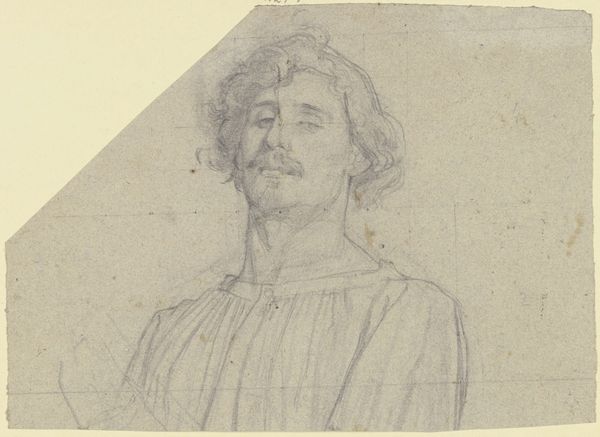
drawing, dry-media, charcoal
#
portrait
#
drawing
#
facial expression drawing
#
pencil sketch
#
charcoal drawing
#
figuration
#
form
#
dry-media
#
portrait reference
#
pencil drawing
#
romanticism
#
france
#
animal drawing portrait
#
portrait drawing
#
facial study
#
charcoal
#
portrait art
#
fine art portrait
Dimensions: 7 5/8 x 7 1/4 in. (19.4 x 18.4 cm) (image, irregular)14 5/8 x 13 15/16 x 1 1/2 in. (37.15 x 35.4 x 3.81 cm) (outer frame)
Copyright: Public Domain
Curator: Anne-Louis Girodet's "Head of a Mustachioed Man," created in 1817, a charcoal drawing that resides here at the Minneapolis Institute of Art. What are your initial thoughts? Editor: Immediately, I'm struck by the material. It's on paper, likely quite ordinary. But the charcoal application – that's where the real labor is. It's subtle but intense. A drawing made for what end? Who handled it and for what price? Curator: Oh, I like that perspective. I feel like this work whispers tales of the romantic spirit, almost defiant in his gaze. The curls cascading just so; he appears in a moment of intense feeling or contemplation. It captures an inner tempest brewing within him. Editor: Tempest? Maybe. Or just a craftsman documenting what's there. Romanticism was a business too. The price of charcoal, the patron's demands... those shaped the 'tempest' as much as any artistic vision. What was the source of charcoal used and were there local cheaper options? Curator: True, the context undeniably plays a part. Still, the dynamism Girodet coaxes from those dark strokes is remarkable! Look at the layers. Do you sense how it practically dances with light and shadow? There's an undeniable intensity. Perhaps a search for lost innocence or a battle with demons. Editor: Or simply skill put to the service of representation. What grade of paper, the precise method the artist employed for the soft gradients? Were they a sign of virtuosity intended to be sold or were the product of some newer technical processes, paper treatment, or pigments being offered? I believe that what something is made of has as much potential to invoke mood and response, like most viewers seem to respond. Curator: The line is blurred for me always. Maybe the 'how' informs the 'why,' a symbiosis, and a very human one. After all, it's charcoal on paper—earth transformed through fire and shaped into being. Editor: Earth to art, art to the market... understanding that transformation makes the experience all the richer for me.
Comments
minneapolisinstituteofart almost 2 years ago
⋮
While this head study was likely drawn from life, the figure’s mustache distances him from the everyday world of Anne-Louis Girodet’s Paris. The drawing can be associated with the artist’s so-called Oriental heads or portraits—a group of late works picturing men from the Near East. Both real and imagined, these subjects usually have dark, thick facial hair, turbans, and, as one Girodet scholar observed, “a heavy, impenetrable gaze as though this disturbing inscrutability were a specific trait of the Oriental portrait.” Following Napoleon’s campaigns in Egypt, Palestine, and Syria, interest in the eastern Mediterranean surged in France. For Girodet, the lure only intensified when he began his monumental painting Revolt of Cairo (1810), commissioned by Napoleon. One pupil reported that Girodet worked with unprecedented verve and assurance, writing that “his mood was playful, he was surrounded by Mamelukes, who were practically living in his house and whose beauty electrified him.”
Join the conversation
Join millions of artists and users on Artera today and experience the ultimate creative platform.
